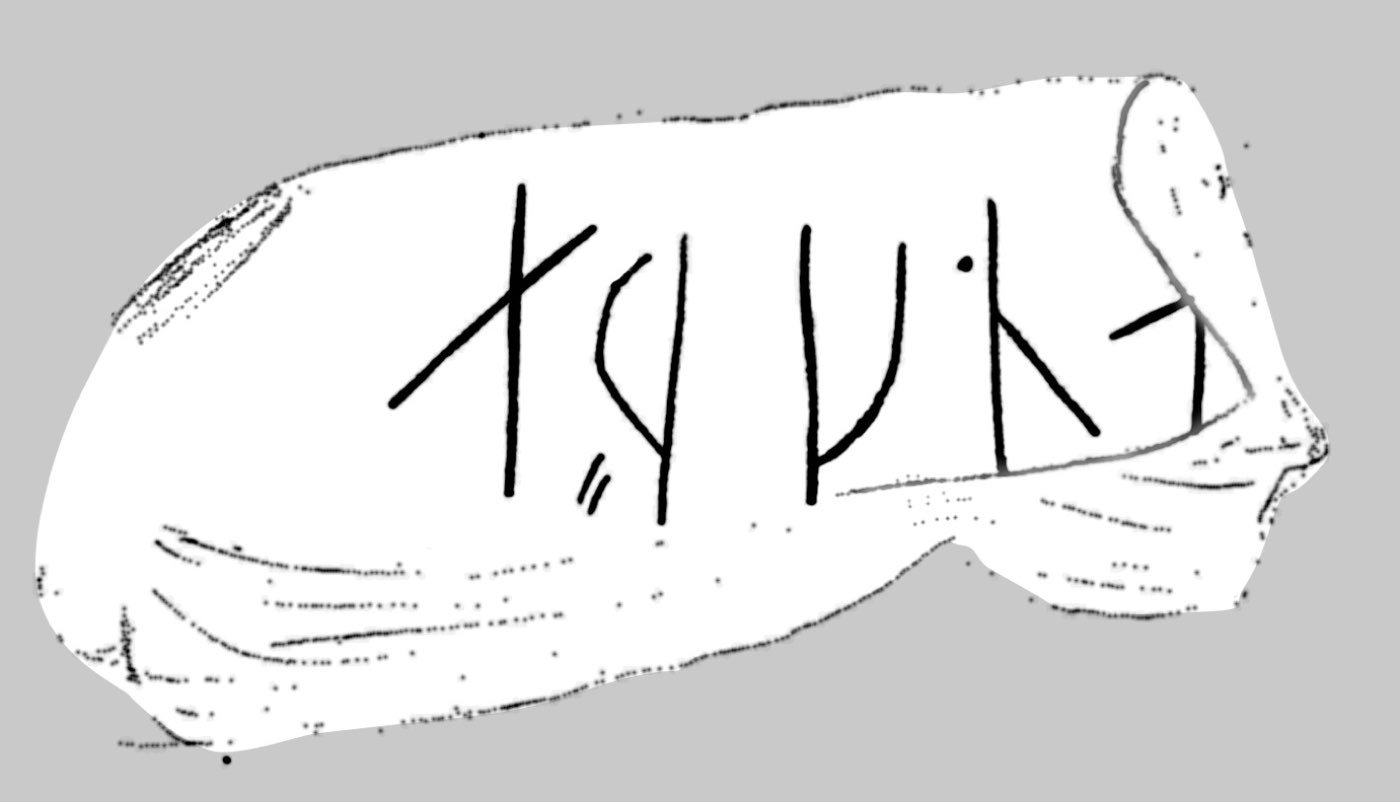Viking-Era Stone Carved with Runes Found in Norway

A stone carved with symbols known as runes and dating to the Middle Ages has been discovered during an excavation ahead of a railway-construction project in Oslo, Norway.
The runes, which were found engraved on a whetstone (a stone used for sharpening knives), date to sometime around 1,000 years ago when the Vikings (also called the Norse) flourished in Norway. The runic writing system conveyed a language and could be used to record and convey information as well as cast spells. Each rune formed a letter or sign and a combination of runes could spell out a word. Who engraved the runes on this newly discovered stone is unknown. [Fierce Fighters: 7 Secrets of Viking Seamen]
Runic writing was used in Norway and other parts of Northern Europe during the Middle Ages, which lasted between roughly 500-1450. However, artifacts containing runes are rare, and archaeologists debate the number of people who could write them, the researchers said.
"On the whetstone, the runes 'æ, r, k, n, a' appear. But it is not easy to tell what they mean," archaeologists with the Norwegian Institute for Cultural Heritage Research (NIKU) said in a statement. The runes could be an attempt to spell a person's name, or they could spell the word "scared," "ugly" or "pain," the archaeologists said in the statement.
The person who wrote these runes was probably not a trained rune carver and was likely learning to spell in runic, Karen Holmqvist, a fellow at NIKU who specializes in the study of runes, said in the statement, noting that the quality of runic writing on the stone is poor.
"The findings contribute to the perception that the art of runic writing was relatively widespread in medieval Norway. But many writers would probably find themselves [with a level of knowledge] where they knew about writing, but were not literate," the archaeologists said in the statement.
The archaeological team wrote a blog post, in Norwegian, sharing their own interpretations of the discovery and invited members of the public to contribute their thoughts on what the runes on this stone mean and who wrote them.
Get the world’s most fascinating discoveries delivered straight to your inbox.
Original article on Live Science.

Owen Jarus is a regular contributor to Live Science who writes about archaeology and humans' past. He has also written for The Independent (UK), The Canadian Press (CP) and The Associated Press (AP), among others. Owen has a bachelor of arts degree from the University of Toronto and a journalism degree from Ryerson University.

